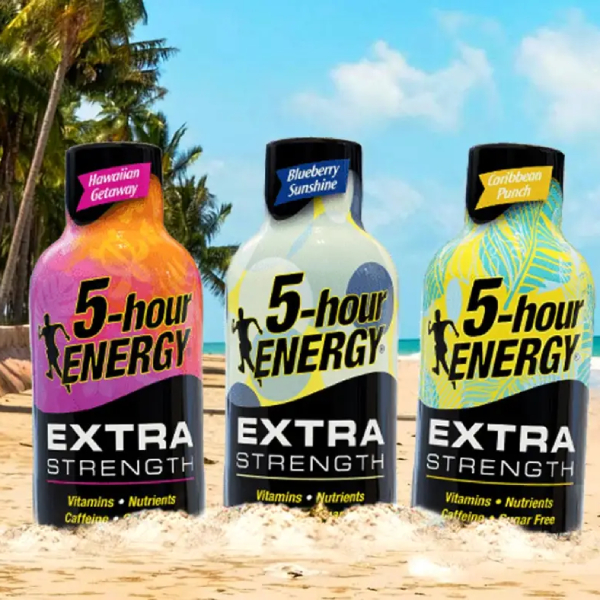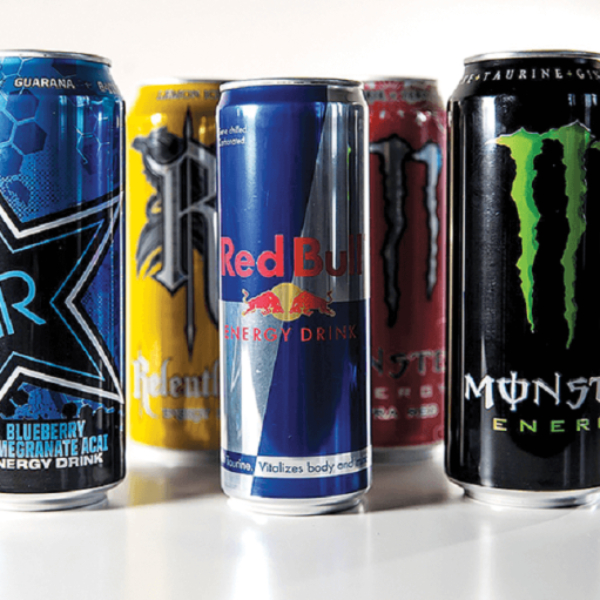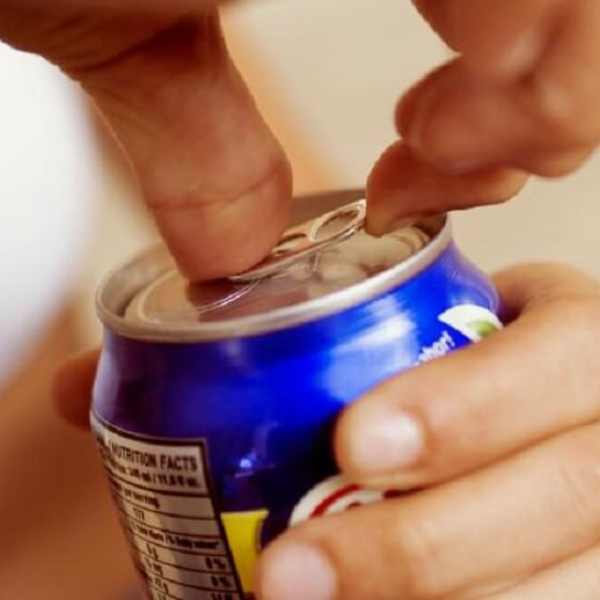Introduction to Energy Drinks and Their Promises
Energy drinks claim to boost your alertness and physical performance. Most contain high levels of caffeine and sugar. These key ingredients are said to increase stamina and concentration. Within minutes of consumption, they promise an instant energy kick. Such drinks are popular among students, athletes, and busy professionals. They target those seeking a quick energy fix to tackle challenging tasks. However, these beverages also bring potential health risks. Understanding how energy drinks affect your body is crucial. It helps you make informed decisions about their consumption. This introduction sets the stage for a deeper dive into the timeline and effects of energy drinks. Next, we’ll explore what actually happens inside your body after that first sip.

The Immediate Effects: What Happens in the First Hour?
In the initial moments after gulping down an energy drink, caffeine bursts into the bloodstream. This rapid infusion can kickstart a jump in heart rate and blood pressure. Within as quick as 10 minutes, you start feeling more awake. Your body gears up for action, as the sympathetic nervous system responds. Not just caffeine, but sugar too gets to work. It floods your system, ready to be converted to immediate energy. By 15 to 30 minutes, you might feel fully charged, alert, and focused.
However, the immediate effects can vary from person to person. Factors like body size, metabolic rate, and tolerance to caffeine play a role. Around 30 to 45 minutes post-consumption, caffeine levels hit their peak. This is when you’ll likely experience the maximum boost in concentration and alertness. It’s also when sugar levels in your bloodstream rise. This can feel like a rush, a sudden surge in energy levels. Understanding how caffeine affects your body is crucial when considering how to quit energy drinks, as recognizing individual responses can help in managing cravings and finding healthier alternatives for increasing concentration and alertness.
It’s worthwhile to be mindful of these effects. Knowing what happens within the first hour can help you use energy drinks responsibly. It’s important to avoid the urge to consume another beverage too soon. Doing so could amplify the effects, potentially leading to discomfort or health risks.
Peaking Concentrations: Caffeine’s Apex in the Body
Caffeine reaches its high point in the body about 30 to 45 minutes after drinking an energy drink. This peak is the moment when the stimulant is most potent in your bloodstream. Your brain becomes highly active, and you may feel the most awake. It is during this peak that the promised boost in focus and alertness is at its strongest.
While the heart rate may have already increased, it now stabilizes at this heightened level. Blood pressure, too, may remain elevated during this period. The caffeine’s blockade of adenosine, a sleep-related chemical in your brain, keeps tiredness away. By blocking this chemical, caffeine provides you with maximum energy.

This period of heightened caffeine concentration is vital. Noticing these signs in your body can help you avoid overconsumption. Stick to one drink, and resist the urge to have more for sustained alertness. Multiple drinks can lead to adverse effects such as jitteriness or increased anxiety. To maintain sustained alertness, it’s important to enjoy Zoa energy drinks in moderation, as overconsumption can lead to negative effects like jitteriness and increased anxiety.
Also, remember the sugar content that comes with energy drinks. Alongside caffeine, high sugar levels boost energy but can soon lead to a crash. This is why it’s important to understand the product’s total caffeine and sugar levels before consumption. To maintain energy levels and mitigate health risks, consuming these beverages in moderation is key.
Recognizing the peak concentration of caffeine can guide you in managing energy drink intake. It helps in preventing overuse and the potential for negative health impacts.
Sugar Content and Its Role in Energy Boost
After consuming an energy drink, the sugar within floods your system. This process begins minutes after that first sip. Bloodstream sugar levels rise quickly, translating to a rapid energy surge. Energy drinks can have high sugar, sometimes more than your daily recommended intake. Such a sugar boost can lead to a spike in insulin. Insulin helps to regulate blood sugar levels, providing instant energy.
However, the effects of this sugar rush are short-lived. Normally, within an hour, a ‘sugar crash’ may occur. This crash can leave you feeling tired, even more so than before. It’s important to recognize this cycle. Understanding can help manage your consumption and energy levels.
High sugar content also carries health risks. Regularly consuming sugary energy drinks may raise the risk of obesity. Over time, this can contribute to diabetes and heart disease. Also, a sugar crash can affect mood and mental focus. Eventually, it can counteract the alertness gain from caffeine. Many energy drinks contain harmful ingredients, including high sugar content, which can increase the risk of obesity, diabetes, and heart disease. Regular consumption may lead to a sugar crash that negatively impacts mood and concentration, ultimately diminishing the benefits of caffeine.
To minimize these risks, it’s advisable to limit intake of sweetened energy drinks. Choose varieties with lower sugar or opt for sugar-free versions. Be mindful of the timing and reasons for energy drink consumption. This will help in maintaining good health while seeking an energy boost.
Understanding Half-Life: The Gradual Decline of Caffeine
After peaking, caffeine’s presence in the bloodstream decreases. This is known as the ‘half-life.’ The half-life is the time it takes for your body to reduce caffeine levels by 50%. It usually lasts 5 to 6 hours, but can be longer depending on factors like age, liver function, and whether you’re using birth control. For energy drink consumers, this means the effects start diminishing after the first peak. But full elimination of caffeine can take up to 12 hours or more. This knowledge can help you plan energy drink consumption around your schedule. It warns against having an energy drink too late in the day, as it could disrupt sleep. Be aware of the half-life concept. It helps you avoid the pitfalls of overconsumption and understand how your body processes caffeine.
After the surge in alertness, a downside awaits. The ‘crash’ often follows the energy boost. The body’s blood sugar plummets, leading to a drop in energy. Tiredness ensues, sometimes more intense than before drinking. Users may feel lethargic, irritable, or even mentally clouded. Overconsumption exacerbates these effects, causing discomfort or anxiety.
Not only does energy dip, but health concerns arise too. Frequent sugar crashes may impact well-being. They can disrupt normal blood sugar regulation, leading to mood swings. Extended use increases obesity risk, contributing to long-term health issues. Sugar intake from these drinks also raises diabetes concerns.
Awareness of the crash helps users manage energy drink intake. It’s vital to anticipate this phase and use drinks sparingly. Strategies like spacing out drinks or choosing low-sugar options can aid. Recognizing the signs early prevents reliance on successive energy boosts. This cautious approach can help maintain energy without the harsh effects of a crash.
Caffeine Withdrawal: What to Expect
After the effects of the energy drink wear off, you might face withdrawal. Common symptoms include headaches, irritability, and tiredness. These can start 12-24 hours after your last drink. Regular energy drink users are more likely to experience these effects. Withdrawal symptoms can last for days, depending on your caffeine intake.

To reduce your risk of withdrawal, limit energy drink use. Swap them for drinks with less caffeine. Consider alternatives like water, herbal tea, or a small coffee. These have lesser caffeine amounts. Following a gradual reduction plan can also ease withdrawal effects. This is better than quitting cold turkey. Aim to reduce your energy drinks gradually over time. This can help minimize withdrawal symptoms.
Understanding the withdrawal process is important. It can plan your consumption of energy drinks. Be aware of how much caffeine you are consuming. Remember, heavy reliance on energy drinks for energy can lead to more severe withdrawal symptoms. Use energy drinks in moderation and listen to your body’s responses.
Conclusion: Balancing Energy Boosts with Health Risks
After exploring how energy drinks act, it’s clear they offer quick boosts. But, these come with health risks. Energy drinks’ high caffeine and sugar can cause quick heartbeats and high blood pressure. They can also lead to crashes, causing tiredness and mood changes. Understanding their effects is crucial for safe use. Limiting intake can help reduce health risks like obesity and diabetes. Choose drinks with less sugar, and avoid late-day consumption to protect sleep. Watch for withdrawal signs when cutting back. Use energy drinks wisely, balancing the need for energy with care for your health. Always listen to your body and respond to its needs.